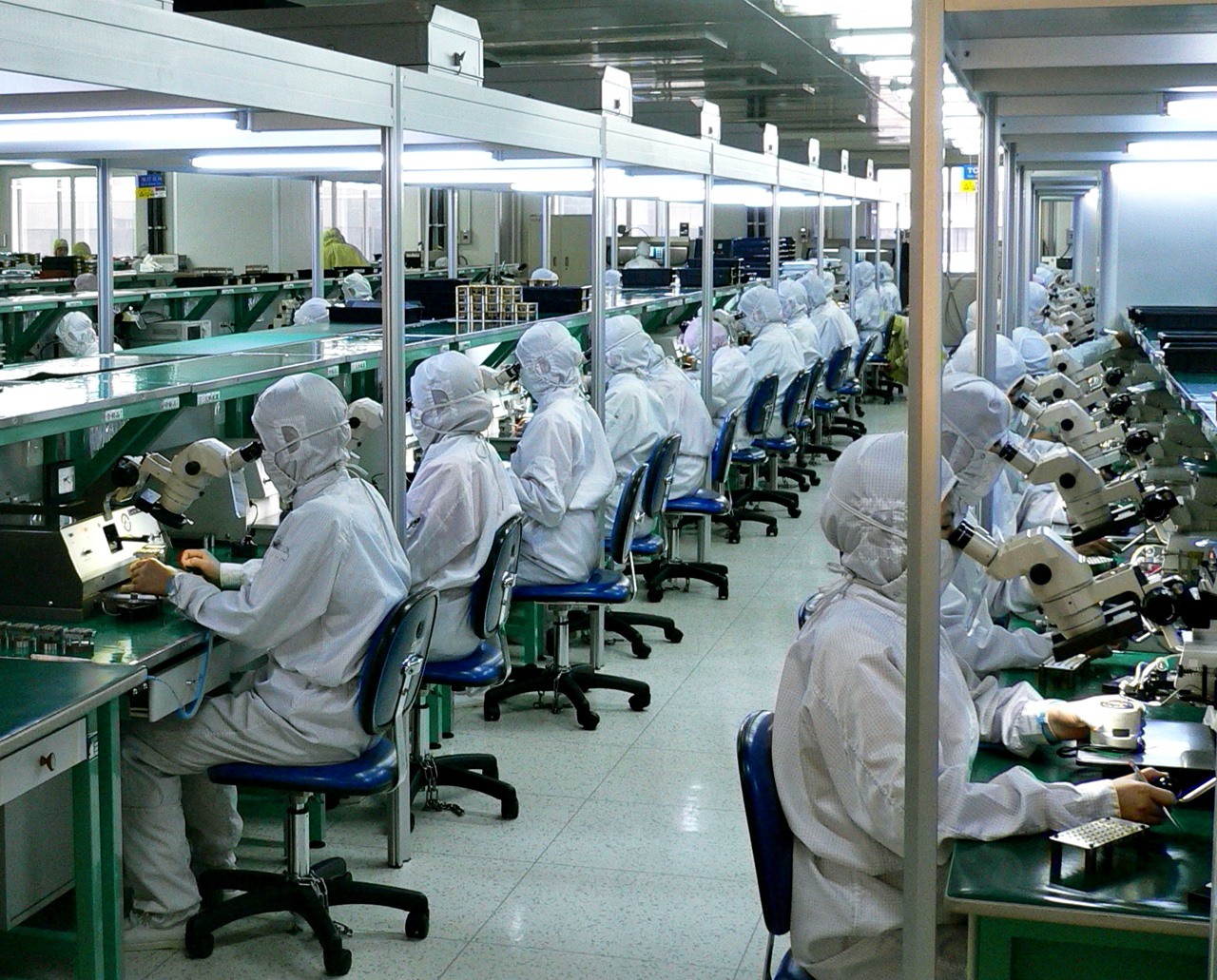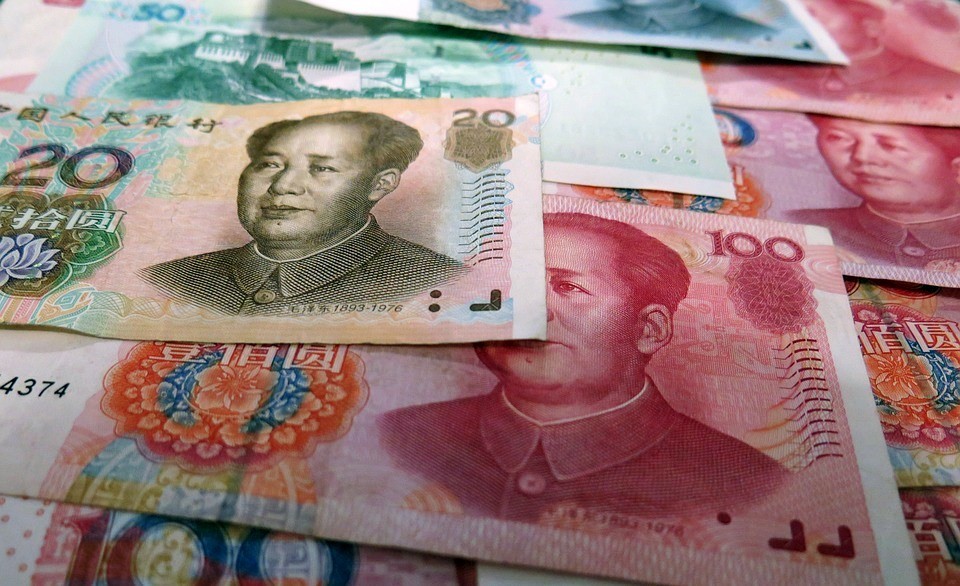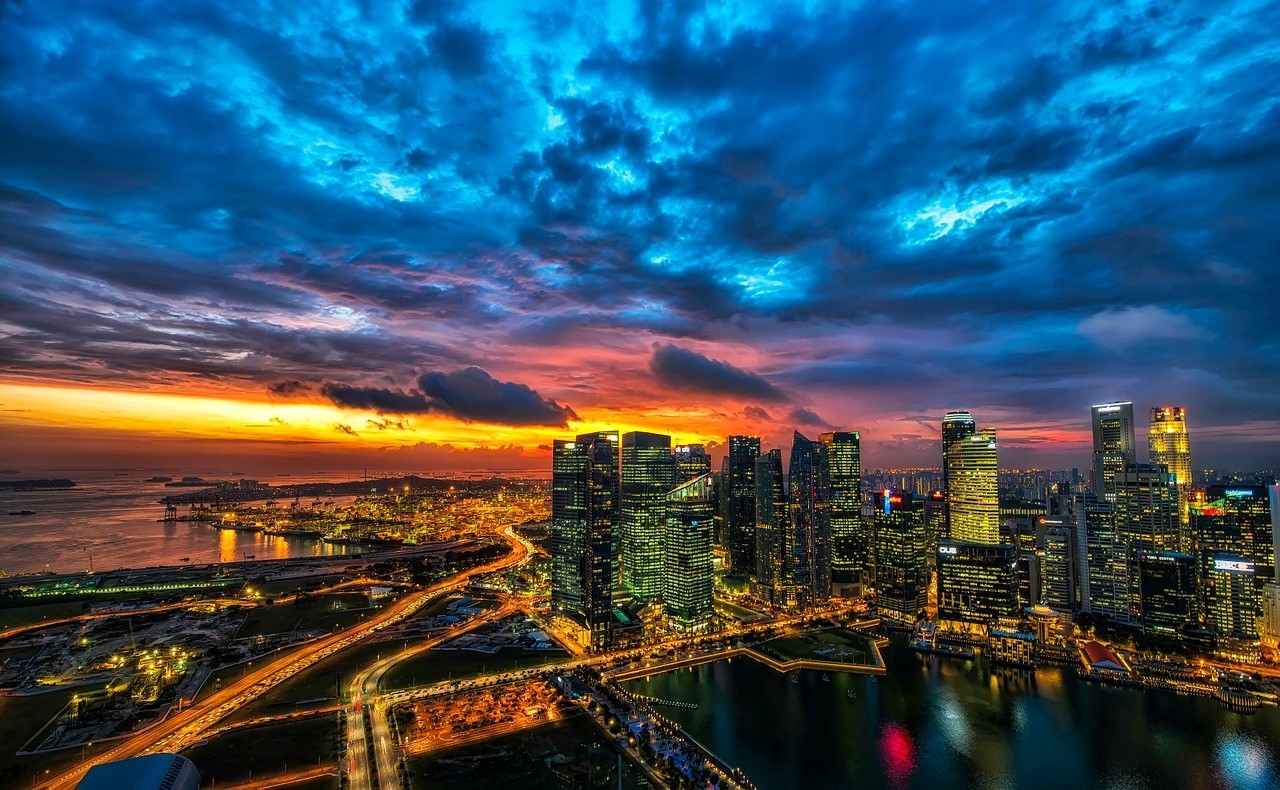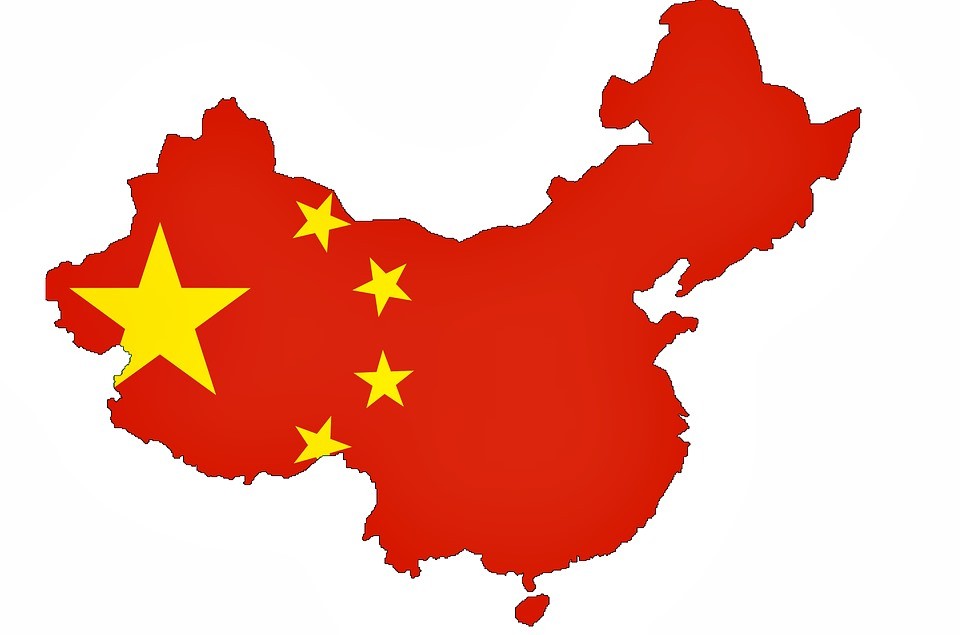Social Media
De Rerum Sinarum – Rethinking China As Production Outsourcing Paradise

Not long ago, it seemed a foregone conclusion that any company that produced goods of almost any type would outsource production to China. Recent events have demanded forward looking businesses beginning to question the wisdom of convention. Wages are on the rise, as are political tensions. Real and audible public outcries deny the very labor practices that have made China such a popular destination for manufacturing. Additionally, domestic politics in the US have fanned flames of uncertainty as to the future of outsourcing.
Exploding Labor Costs
There have been alerts before that rising wages would soon end the attractiveness of doing business in China, and those alerts have been false. In a 2006 article in Business Week, 1 year wage increases of up to 40% in some regions as well as significant jumps countrywide were used as evidence that China's costs would rise enough to be 'game changing'. As is appropriate, the past five years have not seen a significant slowdown in production, even with continuously rising labor costs.
An Elusive Breaking Point
However, common sense suggests that there will be a breaking point. At some point, wages will rise high enough that outsourcing production to China will cease to be as profitable as it once was, and at some point may even determine to be profitable at all. The question, of course, is when that breaking point will come. As we'll discuss below, there are other factors such as domestic taxation schemes that will factor into when such a breaking point will be reached for individual companies.
Producing in China: No Longer a Foregone Conclusion
Neverheless, indicators now point to another spike in wages, such that the decision to do business in China, while not untenable, should not be an automatic decision. Furthermore, rising wages are no longer merely the result of natural economic forces or a labor shortage, as was the case in 2006, but of a restricted government policy to improve standards of living. In addition to expected wage rises of between 11 and 40% between 2011 and 2015, the state will be requiring better worker protection and benefits, further raising costs to prospective outsourcers. Wages across most sectors will remain well below their counterparts in the developed world, but not as far as before.
US Politics: Soft Protectionism?
In the State of the Union address and in many major speeches since, President Obama has begun calling for policies that amount to soft protectionism in order to promote American jobs. The White House has hosted a bevy of high level meetings over the past few years to find out how to bring jobs back to the States and prevent more from leaving. In 2012, the President has begun to outline what he has in mind to achieve this goal: higher taxes and closed tax loopholes on outsourcers, and tax breaks for companies that choose to remain in the US Exactly how this will play out in the two ring Circus of the Senate and House, especially in the run-up to elections, remains to be seen. However, there is at least a moderate risk that outsourcing will soon become more expensive by some degree.
Americans Want Better Working Conditions for the Chinese?
Another issue is the vocal response that American consumers have had revelations that American companies have been working with Chinese factories that treat their workers in a way unpalatable to many Americans. This has been particularly poignant as regards Apple, a company with an interest in pleasing socially engrained urban elites. Media and public protests notwithstanding, however, Apple sales remain strong. Furthermore, smaller producers and companies with a more varied consumer base would seem to have less to worry about. A rigid public relations, naming and marking and labeling regime would probably be required to effect any large-scale change in purchasing patterns. Neverheless, this factor may play a part in future outsourcing decision-making.
Uncertain Chinese Politics and International Relations
Even more uncertain than the tax system in the US (and this is saying something) is the future of the Chinese governmental position on a host of issues, as well the response of the US and international community to such positions. China has been stepping up its campaign to assimilate the Tibetan population, and reports of violence have risen of late. Additionally, China has held the line on the US and Europe? S drive to address the situation in Syria through the UN. After the US suggested it would 'pivot to Asia' in its military stance, China did not react with unmitigated glee. In contrast to recent years, the US has been increasingly vocal in its practices. China is certain to have a new president soon, Xi Jinping. While he is generally regarded as more personable than the reticent Hu Jintao, his policies are unilaterally to be any more palatable to Western governments.
It bears mention, of course, that the US has not been quick to respond economically in the past to reports of human rights abuses by the Chinese, with international political and economic policies seemingly existing in disparate spheres. On the other hand, since China's rise the US has never before had so many calls for protectionism or so many worries about the domestic job situation. While it is far from likely that the US would institute any overt economic punishments, or even certain that subtle trade issues may come into play, there is still an increased risk in global politics that should play into any calculus when considering whether to begin or bolster Outsourcing in China.
Social Media
The Phantom Growth of China's Ghost Cities

Bloomberg has a new video series out called "China's Ghost Cities."
The reporter, Adam Johnson, describes how the Chinese government is building massive cities that no one lives in yet. The expectation is that China is going to "grow" into these cities.
A remarkable idea, really. The authoritarian planners in Beijing or where decide it would be good if, say, a million people or more could relocate to a pre-planned area.
Then they build out the infrastructure – or rather the entire metropolis, skyscrapers, stops and all – and wait.
Stop for a moment and ponder how nutty this is. The last time your editor checked, central planning was not a huge success. According to history, bureaucrats wielding directives over long distances tend to allocate resources poorly.
But are ghost cities a recipe for a bust? Some say no. The Bloomberg reporter, for instance, assures us that China's economies are different – that is to say, "it's different this time." (Where have we heard that before …)
It is supposedly OK that these ghost cities, built for millions of refugees, have only tens of thousands of people living in them – because all that deserted square footage will eventually be put to good use.
As a bonus, building ghost cities is great for economic growth.
Via running superhighways out to the middle of nowhere, erecting steel and glass towers in the boondocks, China generates new jobs in construction, civil engineering, city planning and the like. All this construction looks fabulous on paper. The ghostly infrastructure gets counted as productive output, and the super-aggressive GDP target is maintained.
But what is wrong with that picture?
For one, there is the central planning problem. Growth and development are free market forces, with signature marks of trial and error. Successful cities are built from the ground up, not decreed by bureaucrat stamp. So how does the government know where a new metropolis should go, or what its optimal size should be?
Then you have the accounting problems. Should the promise of tomorrow be so read reflected on balance sheets today?
Imagine if a public corporation said, "We are going to grow 20% per year by building idle factories in the middle of nowhere, that no one is going to use for quite some time. will show up. We'll make a profit on them ever. Just do not ask when. "
Such a plan would be brutalized by the market, because public companies are held accountable for profits and return on investment (ROI). (At least most of the time – in bubble times investors will happily suspend their rational faculties.)
The Chinese government, of course, does not have to seek profit in its actions. Or it can measure results in some entirely non-traditional way, via "how many jobs did we create" or "how do the GDP numbers look."
At the end of the day, the "ghost city" mandate is directly channeling John Maynard Keynes, who once suggested digging holes, then filling them up again as a way to put men to work.
China is being more sophisticated. Rather than digging holes, it is putting up buildings. The effect is the same though. "Some day" the empty skyscrapers will have value – if they are not condemned as worn-out structures first – but until then they are just holes.
China bulls are not bothered by the ghost cities for at least three reasons.
First, they have convinced themselves (with more than a bit of faith) that the empty metropoli will one day (sooner rather than later) be full.
Second, they figure China has a lot of money to burn even if the ghost cities do not work out.
And third, as the old saying goes, "a rolling loan growers no loss." As long as the specialized music is playing, the property developers can keep dancing.
The trouble, as always, comes when the music stops. If China turns out to have built, say, 20 years of excess capacity by the time that happens, then hundreds of billions' worth of stagnant projects will have to be written off.
Tougher still is the idea that China's "economic miracle" is actually a heavily leveraged bet on mercantilism … propped up by runaway construction … with the tail end of the boom pushed recklessly from pie-in-the-sky projections for future growth.
That is another favorite tactic of investment manias: Along with the empire of forever skyward growth curves, mortgaging tomorrow (and borrowing against it) for the sake of today.
Even if China can write checks to cover the write-off costs of all those cities, there is a big multiple built in to the global economy right now on the assumption that China growth is the real deal. When it sinks in that much of growth is actually "ghost" or "phantom" growth – in keeping with these empty monuments to now – the collapse of that multiple could hurt.
Social Media
The Chinese Water Lantern Festival

The Chinese have designed and crafted lanterns that can float in water and glide in the air. Though sky lanterns were initially crafted as a device, to send signals, today they are used as decorative articles. Water Lanterns in Chinese festivals have its own importance.
There is an interesting story to the History of Chinese lanterns. It was believed that these lanterns, both the sky lanterns and the Water lanterns used in Chinese festivals were initially created out of necessity rather than artifacts for decorations. The Chinese have a history of inventing several new things and also leading the way in several new technologies. But, initially, the Chinese did not have access to or the knowhow to make a vital building material – Glass. Hence they did not have glass lanterns or glass windows. On the other hand, they had the skill of making paper. The paper industry in china was so advanced that it could produce paper that was very thin, to let light pass through it. They could also add beautiful colors and embellishments to the paper. Thus was born, the world’s first source of portable light – the lantern.
These lanterns were then gradually adapted to float in water and glide in the sky. Such was the skill of the Chinese craftsmen that these lanterns were used for lighting public places, homes and even battlefields. There is a story of a military strategist Zhuge Liang, having used paper lanterns to help the army march by night and attack by the day.
Over time, this battlefield beacon turned into an epitome of hope and wellbeing and festivity. The origin of the Lantern festival can be dated back to the Han Dynasty. During this time, the city is decorated with lanterns that are beautifully crafted in different shapes and sizes and then displayed with wishes or riddles written on them.
Water lanterns in Chinese festivals like the Moon Festival are a major tourist attraction. People from all over the world come to witness this event. On this day children and adults make or buy Water lanterns and write wishes on them. They then set these lanterns afloat in the water under the moonlight and watch them float away.
Water Lanterns in Chinese Festivals alongside other lanterns are used to light up the way to guide the spirit of their ancestors to come and bless them. Even today this tradition is followed, and people decorate their homes and public places to welcome their ancestors.
Health
Keemun Black Tea From China – Caffeine Content, Health Benefits, And Other Properties

Keemun is a type of Chinese black tea, originating in Qimen county of Anhui Province, China. This article gives an overview of the caffeine content, health benefits, and other properties of Keemun.
Keemun is primarily produced in Anhui province, but teas in this style have also begun to be produced in nearby Hubei, as well as in Jiangxi, and even in Taiwan. Keemun is usually described as having an earthy aroma, and its overall character is quite different from Indian and Ceylon teas. My personal perspective is that Keemun has a richer, warmer quality, often reminiscent of dried fruit, and in higher grades, a pleasing hint of wood or wood smoke. These teas are rich and full-bodied, and are among my favorite black teas.
Caffeine content:
Although you may be looking for more concrete information, it is hard to generalize about the caffeine content of Keemun. Even though it originates primarily in one region and shares certain aspects of production, Keemun is fairly diverse, coming in different grades. As a general rule though, Keemun is often in the moderate to high end of caffeine content, among teas, which means that it still has considerably less caffeine than a typical cup of coffee. Keemun has historically been used in breakfast blends, where strongly caffeinated teas were desired
Health benefits:
Keemun has actually been the subject of direct scientific study., in association with weight loss in animal studies. There is only a small amount of research referring specifically to this variety of tea, however, so most of what can be said about Keemun must be inferred from general studies about black tea.
Although green tea has a stronger association with supposed “health benefits” in the public consciousness in the United States, this association may be skewed by historical factors. Much of the early research on tea and health was conducted in Japan, where tea is synonymous with green tea. Subsequent research has found substantial evidence that black tea is healthy as well. In the absence of more reserach specifically looking at Keemun, it seems reasonable to conclude that Keemun is likely to have a similar amonut of health benefits to black tea.
Locating high-quality Keemun:
My recommendation, if you want to buy the best Keemun, is to buy exclusively loose-leaf. My experience is that the best Keemun is usually sold by companies that specialize in Chinese tea. Because they store relatively well, Chinese black teas, even those of considerably high quality, tend to be relatively inexpensive, with all but the highest grades (Keemun Hao Ya A and B, and Keemun Mao Feng) costing well under $10 for about 1/4 pound or about 100-125 grams. A few companies, including Rishi Tea, Arbor Teas, and Little Red Cup, sell fair trade certified Keemun, produced in Hubei, Anhui, and Jiangxi provinces, respectively.












